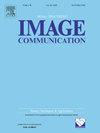360度视频超分辨率和质量增强挑战:方法和结果
IF 2.7
3区 工程技术
Q2 ENGINEERING, ELECTRICAL & ELECTRONIC
引用次数: 0
摘要
由于虚拟现实(VR)和扩展现实(XR)等沉浸式技术的进步,全方位(360度)视频正迅速普及。然而,此类视频的实时流媒体,特别是在无人机(uav)等实时移动场景中,受到有限的带宽和严格的延迟限制的阻碍。虽然压缩和自适应分辨率等传统方法很有帮助,但它们往往会损害视频质量,并引入降低观看者体验的伪影。此外,360度视频独特的球形几何形状,其广阔的视野,提出了传统2D视频所没有遇到的挑战。为了应对这些挑战,我们发起了360度视频超分辨率和质量增强挑战。本次比赛鼓励参赛者开发高效的机器学习(ML)解决方案,以提高低比特率压缩360度视频的质量,在两个轨道下专注于2x和4x超分辨率(SR)。在本文中,我们概述了挑战框架,详细介绍了两个竞赛轨道,并重点介绍了表现最好的模型提出的SR解决方案。我们在一个统一的框架内评估这些模型,(i)考虑质量增强,(ii)比特率增益,(iii)计算效率。我们的研究结果表明,在受限条件下,轻量级单帧模型可以有效地平衡视觉质量和运行时性能,为未来的研究奠定了坚实的基础。这些见解为推进实时360度视频流提供了实用指导,特别是在带宽有限的沉浸式应用中。本文章由计算机程序翻译,如有差异,请以英文原文为准。
360-degree video super resolution and quality enhancement challenge: Methods and results
Omnidirectional (360-degree) video is rapidly gaining popularity due to advancements in immersive technologies like virtual reality (VR) and extended reality (XR). However, real-time streaming of such videos, particularly in live mobile scenarios such as unmanned aerial vehicles (UAVs), is hindered by limited bandwidth and strict latency constraints. While traditional methods such as compression and adaptive resolution are helpful, they often compromise video quality and introduce artifacts that diminish the viewer’s experience. Additionally, the unique spherical geometry of 360-degree video, with its wide field of view, presents challenges not encountered in traditional 2D video. To address these challenges, we initiated the 360-degree Video Super Resolution and Quality Enhancement challenge. This competition encourages participants to develop efficient machine learning (ML)-powered solutions to enhance the quality of low-bitrate compressed 360-degree videos, under two tracks focusing on and super-resolution (SR). In this paper, we outline the challenge framework, detailing the two competition tracks and highlighting the SR solutions proposed by the top-performing models. We assess these models within a unified framework, (i) considering quality enhancement, (ii) bitrate gain, and (iii) computational efficiency. Our findings show that lightweight single-frame models can effectively balance visual quality and runtime performance under constrained conditions, setting strong baselines for future research. These insights offer practical guidance for advancing real-time 360-degree video streaming, particularly in bandwidth-limited immersive applications.
求助全文
通过发布文献求助,成功后即可免费获取论文全文。
去求助
来源期刊

Signal Processing-Image Communication
工程技术-工程:电子与电气
CiteScore
8.40
自引率
2.90%
发文量
138
审稿时长
5.2 months
期刊介绍:
Signal Processing: Image Communication is an international journal for the development of the theory and practice of image communication. Its primary objectives are the following:
To present a forum for the advancement of theory and practice of image communication.
To stimulate cross-fertilization between areas similar in nature which have traditionally been separated, for example, various aspects of visual communications and information systems.
To contribute to a rapid information exchange between the industrial and academic environments.
The editorial policy and the technical content of the journal are the responsibility of the Editor-in-Chief, the Area Editors and the Advisory Editors. The Journal is self-supporting from subscription income and contains a minimum amount of advertisements. Advertisements are subject to the prior approval of the Editor-in-Chief. The journal welcomes contributions from every country in the world.
Signal Processing: Image Communication publishes articles relating to aspects of the design, implementation and use of image communication systems. The journal features original research work, tutorial and review articles, and accounts of practical developments.
Subjects of interest include image/video coding, 3D video representations and compression, 3D graphics and animation compression, HDTV and 3DTV systems, video adaptation, video over IP, peer-to-peer video networking, interactive visual communication, multi-user video conferencing, wireless video broadcasting and communication, visual surveillance, 2D and 3D image/video quality measures, pre/post processing, video restoration and super-resolution, multi-camera video analysis, motion analysis, content-based image/video indexing and retrieval, face and gesture processing, video synthesis, 2D and 3D image/video acquisition and display technologies, architectures for image/video processing and communication.
 求助内容:
求助内容: 应助结果提醒方式:
应助结果提醒方式:


